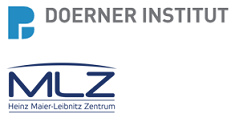Speaker
Description
Element analysis and content visualization of a 12th century enameled reliquary pendant using Prompt Gamma Activation Analysis and Neutron Tomography (PGAI-NT)
In October 2008, a heavily corroded pendant was found during an excavation campaign in the historic district of Mainz, Germany, in an ancient dump. The reliquary pendant, made of gilded copper, is in the shape of a quatrefoil, also referred to as a phylacterion, and dates from the late 12th century. Its front and verso were enamelled using the technique of émail champlevé and its several compartments include figural representations. The side section is also gilded and enamelled with cross-hatched decoration. Two different techniques were applied in the analysis of the pendant’s surface. An elemental analysis was done using micro-X-ray fluorescence, and the glass and pigments of the enamels were investigated using Raman spectroscopy. The carbonaceous content of five reliquary packages became visible after neutron imaging, performed at the Research Neutron Source Heinz Maier-Leibnitz (FRM II), Technical University of Munich in Garching, Germany. A combination of a position-sensitive prompt gamma-ray neutron activation analysis and neutron tomography was used to reveal the reliquary’s internal structures and contents. The latter consisted of small packages of tiny particles of bone covered by textile and wrapped with a thin thread to keep them together. Neutron imaging allowed exact measurements of the textiles and bones. The construction of the container and especially the closure mechanism were also clearly visible. With the aid of infrared spectroscopy, a small sample of wax was identified as beeswax. The analysis of a small fragment of fibre which had survived in the pendant’s suspension eyelet revealed that it was made of silk. This object is one of only four known phylacteria of this type from the late 12th- and early 13th-century Hildesheim workshop in Lower Saxony. The other three are housed in Boston, Rome and Halberstadt. This reliquary pendant is a rare example of an object found in context from controlled archaeological excavations.

